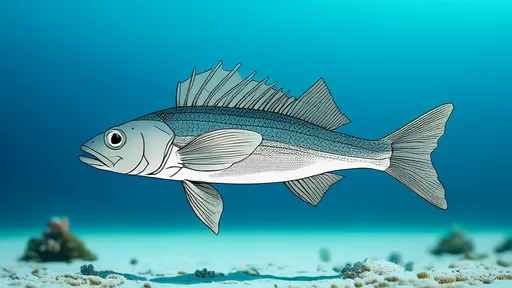The health of aquarium fish is often reflected in subtle physical changes, and one of the most telling signs of underlying issues is fin congestion. When blood vessels in the fins become visibly engorged, it signals distress that can stem from a variety of causes. Understanding the connection between the location of fin congestion and potential diseases is crucial for aquarists aiming to maintain a thriving aquatic environment.
Fin congestion is not a disease in itself but rather a symptom of an underlying problem. The fins of fish are highly vascularized, meaning they contain a dense network of blood vessels. When these vessels dilate or rupture due to stress, infection, or poor water conditions, the fins may appear red, swollen, or streaked with blood. The specific location of the congestion—whether at the base, edges, or throughout the entire fin—can provide valuable clues about the root cause.
In many cases, fin congestion at the edges of the fins is linked to bacterial infections. Pathogens such as Aeromonas or Pseudomonas often target the delicate fin tissues, leading to fraying and redness. These infections are frequently opportunistic, taking hold when a fish’s immune system is compromised by poor water quality or overcrowding. If left untreated, the condition can progress to fin rot, where the fins gradually disintegrate, leaving the fish vulnerable to secondary infections.
Congestion concentrated at the base of the fins may indicate a systemic issue, such as septicemia or internal parasites. Septicemia, a severe bloodstream infection, often causes widespread redness, including at the fin bases, as the body’s inflammatory response intensifies. Internal parasites, on the other hand, can lead to localized swelling and hemorrhage as they disrupt normal blood flow. Observing accompanying symptoms like lethargy, loss of appetite, or abnormal swimming patterns can help narrow down the diagnosis.
Environmental stressors are another common culprit behind fin congestion. Sudden changes in water parameters—such as temperature fluctuations, high ammonia or nitrite levels, or improper pH—can cause physiological stress, manifesting as reddened fins. In such cases, the congestion is often diffuse, affecting multiple fins simultaneously. Unlike infections, stress-related congestion typically improves once water conditions are stabilized, though prolonged exposure to poor water quality can weaken the fish’s immune system, making it susceptible to disease.
Chemical irritants, including improper medication or chlorine in untreated tap water, can also induce fin congestion. The fins may appear inflamed, and the fish might exhibit signs of discomfort, such as rubbing against surfaces or rapid gill movement. Unlike bacterial or parasitic causes, chemical irritation usually resolves quickly once the offending substance is removed, though supportive care may be needed to aid recovery.
Diagnosing the exact cause of fin congestion requires careful observation of the fish’s behavior and environment. For instance, if only one fish in a tank is affected, the issue may be localized, such as an injury or a mild infection. However, if multiple fish show symptoms, the problem is likely systemic, pointing to water quality issues or a contagious disease. Quarantining affected fish and testing water parameters are essential first steps in identifying the underlying cause.
Treatment strategies vary depending on the diagnosis. Bacterial infections often respond to antibiotics or antimicrobial treatments, while parasitic infestations may require specialized medications. Improving water quality through regular changes, proper filtration, and monitoring is always a foundational step, as it addresses both the immediate stress and prevents future outbreaks. In cases of severe fin damage, providing a stress-free environment with optimal nutrition can support healing and regrowth.
Prevention remains the best approach to managing fin congestion. Maintaining stable water conditions, avoiding overcrowding, and quarantining new fish before introducing them to an established tank can significantly reduce the risk of disease. Regularly inspecting fish for early signs of distress allows for prompt intervention, often preventing minor issues from escalating into serious health problems.
Ultimately, fin congestion serves as an early warning system, alerting aquarists to potential threats in their aquatic ecosystems. By paying close attention to the location and progression of this symptom, fishkeepers can take targeted action to restore their fish’s health and ensure a harmonious aquarium environment.

By /Jul 24, 2025

By /Jul 24, 2025

By /Jul 24, 2025

By /Jul 24, 2025

By /Jul 24, 2025

By /Jul 24, 2025

By /Jul 24, 2025

By /Jul 24, 2025

By /Jul 24, 2025

By /Jul 24, 2025

By /Jul 24, 2025

By /Jul 24, 2025

By /Jul 24, 2025

By /Jul 24, 2025

By /Jul 24, 2025

By /Jul 24, 2025

By /Jul 24, 2025

By /Jul 24, 2025